A Deeper Look: San Diego Coastkeeper
There are a lot of threats to our water. Between climate change and pollution, the picture has never looked more bleak. But people are rising to the occasion and taking a stand for our most precious resource. One group doing that here in Southern California is San Diego Coastkeeper.
The name harkens back to 19th Century England, when landowners would hire Riverkeepers to keep watch over their private fishing streams. It came back into use in the 1960’s when a group of fishermen organized to protect the Hudson River from the pollution. It grew and spread to places around the world. Now there are over three hundred groups in the Waterkeeper Alliance.
The San Diego Baykeeper, established in 1995, fought toxic dumping in San Diego Bay. Over the years it grew to become what is now San Diego Coastkeeper. Now, the organization is involved in a variety of water related projects around the San Diego area that range from advocacy and litigation to scientific research and education.
It partnered with other local organizations to get the city of San Diego to build the region’s first ever water recycling plant. This project, which should be operational by 2035, will massively reduce the amount of waste water that ends up in the ocean. It is also estimated that it could cover a third of San Diego’s water needs, which would reduce the city’s dependence on imported water.
 The organization also has a legal team that works to ensure that local groups are in compliance with the Clean Water Act. They have brought a number of suits against polluters and made them adopt practices that are safe for the community and environment.
The organization also has a legal team that works to ensure that local groups are in compliance with the Clean Water Act. They have brought a number of suits against polluters and made them adopt practices that are safe for the community and environment.
In 2021, Coastkeeper launched their BIPOC Youth Science Program, which is a paid internship that promotes diversity in the STEM fields. It gives students the opportunity to participate in research around the Chollas Creek Watershed, while learning skills that will prepare them for a career in science. They also have the opportunity to participate in outdoor recreational activities such as kayaking and rock climbing.
 But the primary focus of San Diego Coastkeeper in recent years has been on stormwater pollution. This is the pollution that occurs when rainwater runs over urban surfaces and picks up toxic materials, like fertilizers, pesticides and oil on its way to the ocean. This pollution poses a threat to both the environment and humans. “People don’t realize that here in San Diego, when it rains, you should be avoiding any contact with Coastal waters, like the beach, for at least seventy-two hours because the water that runs off of our streets and into those storm drains doesn’t get filtered,” Alyssa Senturk, Coastkeeper’s Communications and Outreach Director, said.
But the primary focus of San Diego Coastkeeper in recent years has been on stormwater pollution. This is the pollution that occurs when rainwater runs over urban surfaces and picks up toxic materials, like fertilizers, pesticides and oil on its way to the ocean. This pollution poses a threat to both the environment and humans. “People don’t realize that here in San Diego, when it rains, you should be avoiding any contact with Coastal waters, like the beach, for at least seventy-two hours because the water that runs off of our streets and into those storm drains doesn’t get filtered,” Alyssa Senturk, Coastkeeper’s Communications and Outreach Director, said.
There are a number of ways San Diego Coastkeeper has pushed for the city to create green infrastructure that will catch the runoff and filter it in natural ways. These include things like berms and rainwater gardens that will allow rainwater to sink into the ground, rather than running off into the ocean.
 They are also pushing for storm water capture. This would help prevent pollution, while also reducing the city’s dependency on imported water. Currently, San Diego gets almost all of its water from Northern California and the Colorado River, which requires a massive amount of energy. Studies estimate that stormwater capture could cover twenty-percent of the city’s water needs.
They are also pushing for storm water capture. This would help prevent pollution, while also reducing the city’s dependency on imported water. Currently, San Diego gets almost all of its water from Northern California and the Colorado River, which requires a massive amount of energy. Studies estimate that stormwater capture could cover twenty-percent of the city’s water needs.
The problem is, San Diego’s storm infrastructure is over a hundred years old and increasingly prone to issues. On top of that, the city has no dedicated source of funding for stormwater infrastructure. “Whenever emergencies happen, like pipe failures, sinkholes, pollution issues they pull out of the general fund that should be going to parks and roads and other public services,” Senturk said. Because of this, issues are dealt with on an individual basis and the systemic problems are never addressed.
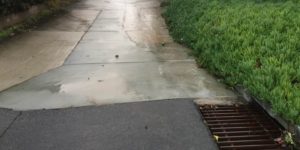 To deal with this, San Diego Coastkeeper is advocating for a ballot measure that will hopefully go before the voters in 2024. If passed, it would provide the city with the funding needed to address these problems. It would be similar to a measure passed by Los Angeles in 2018 that raised the city’s stormwater fees to address the same problem.
To deal with this, San Diego Coastkeeper is advocating for a ballot measure that will hopefully go before the voters in 2024. If passed, it would provide the city with the funding needed to address these problems. It would be similar to a measure passed by Los Angeles in 2018 that raised the city’s stormwater fees to address the same problem.
San Diego has not raised its stormwater fees since 1996, which are still only $0.95 per month. This is far less than most other major cities, which have fees around $10 per month. The ballot measure, which would require two thirds of voters to approve, would raise that amount to something that is similar to other cities.
 “We want to connect that in people’s minds, because it’s not something that they usually see, until it’s ruining their day and they’re having to divert people off the 78 freeway because of sinkholes and erosion,” Senturk said.
“We want to connect that in people’s minds, because it’s not something that they usually see, until it’s ruining their day and they’re having to divert people off the 78 freeway because of sinkholes and erosion,” Senturk said.
These are just a few of the important programs San Diego Coastkeeper is doing for our community. If you are interested in learning more about what they do or would like to support their mission, go to sdcoastkeeper.org. There you can find opportunities to get involved, or make a donation.
Photos courtesy of San Diego Coastkeeper.

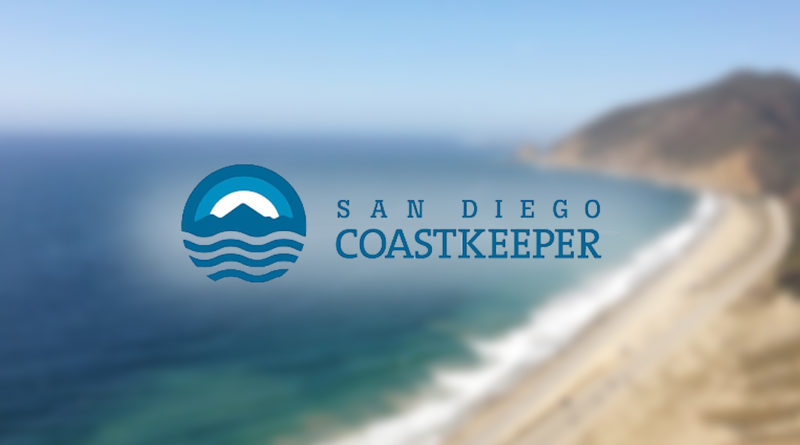
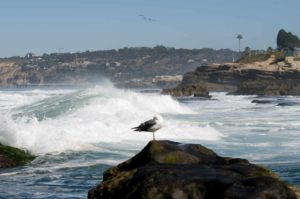
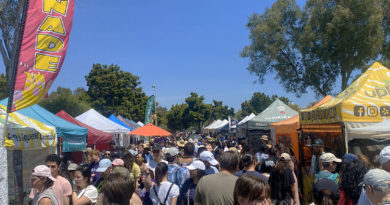

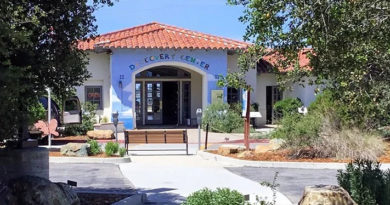
ynyzzb
3zrnat
ise2f1
I went over this web site and I think you have a lot of wonderful info , saved to my bookmarks (:.
I enjoy you because of your entire work on this web page. Debby enjoys getting into investigation and it’s really easy to understand why. My partner and i learn all concerning the powerful method you provide simple things by means of your web blog and welcome contribution from website visitors on the issue and our own princess is certainly understanding a great deal. Enjoy the rest of the new year. Your doing a first class job.
emkf29
The way you put together the information on your posts is commendable. I would highly recommend this site. You might also want to check my page YV6 for some noteworthy inputs about Web Traffic.
Great web site. A lot of helpful info here. I am sending it to some pals ans additionally sharing in delicious. And naturally, thank you to your effort!
Hello, Neat post. There is a problem together with your site in internet explorer, could test thisK IE nonetheless is the marketplace leader and a big element of other people will leave out your magnificent writing due to this problem.
obviously like your web site but you have to take a look at the spelling on quite a few of your posts. Several of them are rife with spelling issues and I in finding it very bothersome to tell the reality however I will definitely come again again.
Hey very cool website!! Man .. Beautiful .. Amazing .. I’ll bookmark your web site and take the feeds also…I am happy to find numerous useful info here in the post, we need develop more strategies in this regard, thanks for sharing. . . . . .
Throughout this awesome pattern of things you get an A with regard to effort and hard work. Where you actually confused everybody ended up being in the particulars. You know, it is said, details make or break the argument.. And that couldn’t be more true at this point. Having said that, let me reveal to you precisely what did work. Your article (parts of it) can be quite powerful and that is probably the reason why I am taking an effort to opine. I do not really make it a regular habit of doing that. Secondly, even though I can notice the jumps in logic you make, I am definitely not convinced of exactly how you appear to unite the details which produce the actual conclusion. For right now I will subscribe to your issue however wish in the foreseeable future you actually link the facts better.
Great wordpress blog here.. It’s hard to find quality writing like yours these days. I really appreciate people like you! take care
Sweet blog! I found it while browsing on Yahoo News. Do you have any suggestions on how to get listed in Yahoo News? I’ve been trying for a while but I never seem to get there! Cheers
I like what you guys are up also. Such smart work and reporting! Keep up the excellent works guys I’ve incorporated you guys to my blogroll. I think it will improve the value of my web site :).
Usually I don’t read article on blogs, however I wish to say that this write-up very forced me to try and do it! Your writing style has been surprised me. Thank you, very nice post.
I dugg some of you post as I cogitated they were very beneficial extremely helpful
c3kcd9
It¦s in reality a nice and helpful piece of information. I¦m glad that you shared this helpful info with us. Please keep us informed like this. Thank you for sharing.
Thankyou for helping out, excellent info .
p0ow6d
lfu0jh
I really enjoy reading on this website , it has wonderful posts.
Keep functioning ,terrific job!
Some truly nice stuff on this website , I enjoy it.
q6pvjf
Hello, Neat post. There is a problem with your web site in internet explorer, would check thisK IE still is the market chief and a huge element of other folks will miss your fantastic writing due to this problem.
It?¦s actually a cool and useful piece of info. I am happy that you shared this useful information with us. Please keep us informed like this. Thank you for sharing.
Hello, i think that i saw you visited my site thus i came to “return the favor”.I’m trying to find things to enhance my website!I suppose its ok to use a few of your ideas!!
I really enjoy reading through on this internet site, it has got wonderful posts.
you are truly a excellent webmaster. The website loading speed is amazing. It kind of feels that you’re doing any distinctive trick. Furthermore, The contents are masterwork. you have done a excellent task in this topic!
I will right away snatch your rss feed as I can’t in finding your e-mail subscription link or e-newsletter service. Do you’ve any? Kindly permit me recognize in order that I could subscribe. Thanks.
Sweet blog! I found it while surfing around on Yahoo News. Do you have any tips on how to get listed in Yahoo News? I’ve been trying for a while but I never seem to get there! Thanks
Someone essentially help to make seriously articles I would state. This is the first time I frequented your web page and thus far? I surprised with the research you made to create this particular publish extraordinary. Wonderful job!
I really like your writing style, excellent information, appreciate it for posting :D. “Freedom is the emancipation from the arbitrary rule of other men.” by Mortimer Adler.
I was curious if you ever considered changing the structure of your blog? Its very well written; I love what youve got to say. But maybe you could a little more in the way of content so people could connect with it better. Youve got an awful lot of text for only having one or 2 images. Maybe you could space it out better?
I will immediately grab your rss feed as I can’t find your e-mail subscription link or e-newsletter service. Do you’ve any? Please let me know in order that I could subscribe. Thanks.
After examine a few of the blog posts on your web site now, and I really like your way of blogging. I bookmarked it to my bookmark website list and might be checking back soon. Pls take a look at my web page as properly and let me know what you think.
It’s hard to find educated individuals on this matter, but you sound like you know what you’re speaking about! Thanks
Some truly good info , Glad I noticed this. “What happens is not as important as how you react to what happens.” by Thaddeus Golas.
Sweet blog! I found it while browsing on Yahoo News. Do you have any suggestions on how to get listed in Yahoo News? I’ve been trying for a while but I never seem to get there! Appreciate it
Hi there very nice site!! Guy .. Beautiful .. Wonderful .. I will bookmark your blog and take the feeds additionallyKI am glad to find a lot of useful information here within the put up, we’d like work out more techniques on this regard, thank you for sharing. . . . . .
I genuinely prize your work, Great post.
gbfz0g
I haven’t checked in here for a while as I thought it was getting boring, but the last few posts are good quality so I guess I will add you back to my daily bloglist. You deserve it my friend 🙂
Hiya very cool website!! Man .. Excellent .. Wonderful .. I’ll bookmark your blog and take the feeds additionally…I’m happy to seek out numerous helpful information right here within the submit, we want work out extra strategies in this regard, thanks for sharing.
pfat49
Эта статья предлагает живое освещение актуальной темы с множеством интересных фактов. Мы рассмотрим ключевые моменты, которые делают данную тему важной и актуальной. Подготовьтесь к насыщенному путешествию по неизвестным аспектам и узнайте больше о значимых событиях.
Подробнее – https://www.hotel-sugano.com/bbs/sugano.cgi/datasphere.ru/club/user/12/blog/2477/itbitgroup.ru/datasphere.ru/club/user/12/blog/2477/sinopipefittings.com/e_Feedback/www.hip-hop.ru/forum/sugano.cgi?page20=val
I have been checking out some of your stories and i can claim nice stuff. I will surely bookmark your blog.
I am always thought about this, regards for posting.
4p2kxq
ucwj8z
I have been exploring for a little for any high quality articles or weblog posts in this sort of house . Exploring in Yahoo I eventually stumbled upon this web site. Reading this information So i am happy to express that I have an incredibly excellent uncanny feeling I found out exactly what I needed. I so much indisputably will make certain to do not omit this web site and provides it a glance regularly.
I like what you guys tend to be up too. This type of clever work and reporting! Keep up the awesome works guys I’ve added you guys to my own blogroll.
Hey very nice blog!! Man .. Excellent .. Amazing .. I will bookmark your website and take the feeds also…I’m happy to find numerous useful information here in the post, we need develop more techniques in this regard, thanks for sharing. . . . . .
cfhndf
I have been absent for a while, but now I remember why I used to love this site. Thanks , I¦ll try and check back more frequently. How frequently you update your website?
Когда проблема зависимости достигает критического уровня, оперативное вмешательство становится необходимостью. В Екатеринбурге профессиональные наркологи готовы выехать на дом круглосуточно, чтобы начать лечение зависимости немедленно. Такой формат оказания помощи позволяет пациенту получить качественную терапию в знакомой и уютной обстановке, что значительно снижает уровень стресса и способствует быстрому восстановлению.
Получить дополнительную информацию – [url=https://alko-zakodirovat.ru/]vivod iz zapoya ekaterinburg[/url]
”Перезагрузка” – ваш шанс избавиться от зависимостей и начать новую жизнь. Лечение должно быть всесторонним и учитывать все особенности пациента. Вместе мы сможем преодолеть зависимость! Мы понимаем, как важно безопасное пространство для выздоровления. Мы стремимся к тому, чтобы вы вернулись к полноценной жизни, счастливой и здоровой. Индивидуальный план лечения начинается с диагностики. Мы помогаем вам очистить тело и изменить мышление.
Подробнее можно узнать тут – [url=https://zavisim-alko.ru/]вывод из запоя дешево краснодар[/url]
Hello There. I found your blog using msn. This is an extremely well written article. I’ll be sure to bookmark it and return to read more of your useful info. Thanks for the post. I’ll certainly return.
2zxk45
Precisely what I was looking for, regards for posting.
5nv9yo
купить аккаунт заработок на аккаунтах
платформа для покупки аккаунтов маркетплейс аккаунтов
площадка для продажи аккаунтов купить аккаунт
магазин аккаунтов социальных сетей маркетплейс аккаунтов
купить аккаунт kupit-akkaunt-top.ru/
Buy Pre-made Account Guaranteed Accounts
fg92gj
p2kcdb
https://pinupaz.top/# pin up azerbaycan
https://pinupaz.top/# pin up azerbaycan
Hi there, I found your website via Google while looking for a related topic, your site came up, it looks good. I have bookmarked it in my google bookmarks.
modafinil pharmacy: legal Modafinil purchase – modafinil legality
purchase Modafinil without prescription: purchase Modafinil without prescription – modafinil 2025
legal Modafinil purchase: purchase Modafinil without prescription – modafinil legality
I have recently started a blog, the info you offer on this site has helped me greatly. Thanks for all of your time & work.
order Viagra discreetly: no doctor visit required – buy generic Viagra online
same-day Viagra shipping: order Viagra discreetly – secure checkout Viagra
There is visibly a bundle to identify about this. I assume you made some good points in features also.
trusted Viagra suppliers: fast Viagra delivery – no doctor visit required
http://maxviagramd.com/# Viagra without prescription
I have not checked in here for a while because I thought it was getting boring, but the last few posts are good quality so I guess I will add you back to my daily bloglist. You deserve it my friend 🙂
modafinil legality: safe modafinil purchase – verified Modafinil vendors
best price for Viagra: legit Viagra online – trusted Viagra suppliers
fast Viagra delivery: order Viagra discreetly – fast Viagra delivery
best price Cialis tablets buy generic Cialis online cheap Cialis online
Modafinil for sale: verified Modafinil vendors – modafinil legality
secure checkout Viagra: fast Viagra delivery – discreet shipping
order Cialis online no prescription: Cialis without prescription – buy generic Cialis online
https://zipgenericmd.com/# generic tadalafil
Some truly interesting information, well written and broadly user friendly.
It’s appropriate time to make some plans for the future and it is time to be happy. I have read this post and if I could I want to suggest you few interesting things or tips. Perhaps you could write next articles referring to this article. I wish to read more things about it!
modafinil 2025 modafinil legality verified Modafinil vendors
buy modafinil online: modafinil legality – purchase Modafinil without prescription
obviously like your web site however you need to check the spelling on several of your posts. Several of them are rife with spelling problems and I to find it very troublesome to inform the reality on the other hand I’ll surely come back again.
affordable ED medication: buy generic Cialis online – buy generic Cialis online
purchase Modafinil without prescription: modafinil legality – doctor-reviewed advice
https://modafinilmd.store/# buy modafinil online
generic tadalafil: discreet shipping ED pills – generic tadalafil
Hello there, just become alert to your weblog thru Google, and found that it is really informative. I am going to watch out for brussels. I will be grateful should you continue this in future. Many folks will be benefited out of your writing. Cheers!
Cialis without prescription online Cialis pharmacy affordable ED medication
secure checkout Viagra: trusted Viagra suppliers – safe online pharmacy
same-day Viagra shipping: order Viagra discreetly – buy generic Viagra online
order Cialis online no prescription: generic tadalafil – FDA approved generic Cialis
https://zipgenericmd.com/# best price Cialis tablets
Wow! Thank you! I continually needed to write on my site something like that. Can I implement a part of your post to my blog?
I just could not depart your website prior to suggesting that I really enjoyed the standard information a person provide for your visitors? Is gonna be back often to check up on new posts
modafinil 2025 modafinil pharmacy modafinil legality
legit Viagra online: trusted Viagra suppliers – generic sildenafil 100mg
buy generic Cialis online: discreet shipping ED pills – FDA approved generic Cialis
secure checkout Viagra: cheap Viagra online – order Viagra discreetly
https://zipgenericmd.com/# cheap Cialis online
legal Modafinil purchase modafinil 2025 legal Modafinil purchase
legal Modafinil purchase: buy modafinil online – safe modafinil purchase
buy modafinil online: buy modafinil online – buy modafinil online
https://maxviagramd.com/# no doctor visit required
affordable ED medication cheap Cialis online discreet shipping ED pills
fast Viagra delivery: safe online pharmacy – discreet shipping
buy modafinil online: verified Modafinil vendors – modafinil 2025
https://maxviagramd.shop/# discreet shipping
modafinil pharmacy: Modafinil for sale – legal Modafinil purchase
modafinil legality: verified Modafinil vendors – legal Modafinil purchase
online Cialis pharmacy secure checkout ED drugs secure checkout ED drugs
https://maxviagramd.com/# legit Viagra online
affordable ED medication: buy generic Cialis online – discreet shipping ED pills
secure checkout ED drugs: affordable ED medication – online Cialis pharmacy
buy modafinil online: Modafinil for sale – safe modafinil purchase
secure checkout ED drugs best price Cialis tablets cheap Cialis online
площадка для продажи аккаунтов купить аккаунт
http://prednihealth.com/# PredniHealth
can i purchase prednisone without a prescription: buy prednisone canadian pharmacy – where can i buy prednisone
Amo Health Care: where to get amoxicillin over the counter – amoxicillin 500mg capsules price
can i get clomid pills Clom Health buying generic clomid price
PredniHealth: can you buy prednisone in canada – PredniHealth
http://prednihealth.com/# prednisone price
prednisone 1 mg for sale: prednisone 40 mg price – PredniHealth
where buy cheap clomid without prescription: how can i get cheap clomid without a prescription – where can i get cheap clomid without dr prescription
PredniHealth: prednisone 5mg price – cost of prednisone tablets
how to buy amoxycillin Amo Health Care amoxicillin canada price
https://prednihealth.shop/# prednisone 20mg cheap
Amo Health Care: Amo Health Care – can i buy amoxicillin over the counter
cheap amoxicillin 500mg: Amo Health Care – Amo Health Care
Amo Health Care: Amo Health Care – Amo Health Care
where can i buy generic clomid without insurance clomid clomid rx
маркетплейс аккаунтов https://akkaunt-magazin.online/
https://prednihealth.shop/# prednisone online paypal
where to get generic clomid pills: Clom Health – how to buy cheap clomid online
Amo Health Care: Amo Health Care – Amo Health Care
Amo Health Care: Amo Health Care – Amo Health Care
cost of cheap clomid Clom Health can you get cheap clomid without insurance
Эта статья предлагает захватывающий и полезный контент, который привлечет внимание широкого круга читателей. Мы постараемся представить тебе идеи, которые вдохновят вас на изменения в жизни и предоставят практические решения для повседневных вопросов. Читайте и вдохновляйтесь!
Ознакомиться с деталями – https://www.lakshmilawhouse.com/product/e-tds-returns-multi-user-f-y-2018-19
https://amohealthcare.store/# Amo Health Care
PredniHealth: PredniHealth – can you buy prednisone
Amo Health Care: how to get amoxicillin – Amo Health Care
Amo Health Care Amo Health Care where to buy amoxicillin 500mg without prescription
https://amohealthcare.store/# amoxicillin 500mg capsule buy online
where can i buy amoxicillin over the counter uk: where can i buy amoxicillin without prec – Amo Health Care
Amo Health Care: buying amoxicillin in mexico – Amo Health Care
https://prednihealth.com/# prednisone generic brand name
amoxicillin buy online canada amoxicillin 500mg capsules antibiotic amoxicillin tablet 500mg
Amo Health Care: Amo Health Care – amoxacillian without a percription
продать аккаунт https://akkaunty-optom.live/
clomid tablets: Clom Health – order generic clomid online
магазин аккаунтов маркетплейсов аккаунтов
продажа аккаунтов https://akkaunty-dlya-prodazhi.pro
https://prednihealth.shop/# PredniHealth
PredniHealth PredniHealth 100 mg prednisone daily
PredniHealth: PredniHealth – PredniHealth
prednisone 60 mg daily: PredniHealth – PredniHealth
cialis for bph insurance coverage: cialis insurance coverage – cialis purchase
cialis headache cialis review when will generic cialis be available
canadian cialis: TadalAccess – buying generic cialis
https://tadalaccess.com/# best price for tadalafil
купить аккаунт https://kupit-akkaunt.online
cialis samples for physicians: what are the side effect of cialis – cialis cost at cvs
cialis sample pack: Tadal Access – where can i buy cialis online
https://tadalaccess.com/# cialis 5mg price comparison
cialis for bph Tadal Access how to buy cialis
tadalafil best price 20 mg: what is the cost of cialis – tadalafil price insurance
cialis maximum dose: Tadal Access – nebenwirkungen tadalafil
pastilla cialis buy tadalafil online no prescription tadalafil brand name
tadalafil and ambrisentan newjm 2015: cialis online aust – buy cialis united states
cialis windsor canada: cialis professional ingredients – tadalafil 40 mg india
https://tadalaccess.com/# cialis tadalafil & dapoxetine
what is cialis tadalafil used for TadalAccess best price for cialis
when does cialis go generic: cialis side effect – cialis bodybuilding
tadalafil dapoxetine tablets india: TadalAccess – paypal cialis payment
tadalafil 20 mg directions cialis stories purchase cialis online
cialis samples for physicians: Tadal Access – tadalafil brand name
https://tadalaccess.com/# purchase brand cialis
is generic tadalafil as good as cialis: is tadalafil from india safe – tadalafil tablets 20 mg global
canadian online pharmacy cialis: paypal cialis no prescription – cialis instructions
buy cialis canada paypal cialis for sale online in canada when is the best time to take cialis
https://tadalaccess.com/# free cialis samples
order cialis online: buy cialis canada paypal – difference between sildenafil and tadalafil
cialis vs flomax for bph: what does cialis treat – cipla tadalafil review
cialis 20mg tablets TadalAccess difference between sildenafil and tadalafil
https://tadalaccess.com/# cheap generic cialis
cialis prescription cost: buy cialis tadalafil – how long does it take cialis to start working
cialis 20 mg coupon: cialis recommended dosage – how to take liquid tadalafil
buy fb account https://buy-adsaccounts.work
buy facebook accounts for advertising https://buy-ad-accounts.click
cialis and high blood pressure TadalAccess us pharmacy prices for cialis
facebook accounts for sale facebook ad account for sale
https://tadalaccess.com/# non prescription cialis
cialis buy: order cialis canada – buy generic cialis online
cialis 20mg Tadal Access how long does it take cialis to start working
https://tadalaccess.com/# how long does it take cialis to start working
tadalafil cost cvs: Tadal Access – overnight cialis
cialis for daily use reviews: cialis from canadian pharmacy registerd – cheap cialis 5mg
https://tadalaccess.com/# cialis precio
order cialis online cheap generic cialis paypal when will cialis be generic
cialis cheapest price: TadalAccess – canadian pharmacy ezzz cialis
cialis superactive: tadalafil review forum – what are the side effect of cialis
https://tadalaccess.com/# buy cialis from canada
evolution peptides tadalafil sublingual cialis pastilla cialis
how long does cialis last 20 mg: non prescription cialis – cialis 100mg from china
does medicare cover cialis for bph: TadalAccess – natural alternative to cialis
https://tadalaccess.com/# shop for cialis
Ломка – это тяжелый синдром отмены, возникающий после длительного употребления алкоголя или наркотических веществ. При резком прекращении их приема нервная система и другие органы начинают страдать от недостатка необходимых веществ, что приводит к сильному дискомфорту, психоэмоциональным нарушениям и ухудшению общего состояния организма. В Новосибирске наркологическая клиника «Возрождение» оказывает экстренную помощь при снятии ломки, обеспечивая безопасное, круглосуточное и конфиденциальное лечение под наблюдением опытных специалистов.
Подробнее можно узнать тут – [url=https://snyatie-lomki-novosibirsk8.ru/]снятие ломки нарколог[/url]
cialis commercial bathtub buy cialis canada cialis pills online
what is cialis for: TadalAccess – cialis professional 20 lowest price
cialis australia online shopping: TadalAccess – what is the normal dose of cialis
https://tadalaccess.com/# cialis generic versus brand name
does tadalafil lower blood pressure: TadalAccess – teva generic cialis
over the counter drug that works like cialis Tadal Access cialis black 800 mg pill house
cialis coupon walmart: TadalAccess – cialis softabs online
max dosage of cialis: cialis pills for sale – cialis generic purchase
when should you take cialis TadalAccess what does cialis do
https://tadalaccess.com/# cialis one a day with dapoxetine canada
us pharmacy prices for cialis: Tadal Access – cialis back pain
best place to buy liquid tadalafil: cialis package insert – what to do when cialis stops working
cialis manufacturer TadalAccess tadalafil online paypal
https://tadalaccess.com/# cialis in las vegas
cialis 5mg 10mg no prescription: cialis online aust – tadalafil tablets erectafil 20
online cialis no prescription: Tadal Access – what is the generic for cialis
is there a generic cialis available in the us Tadal Access cialis canada
https://tadalaccess.com/# cialis dopoxetine
tadalafil troche reviews: cialis 5mg side effects – where to buy cialis online
cialis covered by insurance: cialis after prostate surgery – cialis free trial phone number
obviously like your website however you have to take a look at the spelling on quite a few of your posts. A number of them are rife with spelling problems and I to find it very bothersome to inform the truth then again I will definitely come back again.
20 mg tadalafil best price vardenafil and tadalafil cialis tadalafil 20 mg
https://tadalaccess.com/# what happens when you mix cialis with grapefruit?
buy cialis with american express: cialis tadalafil discount – cialis professional
shop for cialis: generic tadalafil cost – whats the max safe dose of tadalafil xtenda for a healthy man
teva generic cialis Tadal Access cialis 10mg reviews
https://tadalaccess.com/# cialis how does it work
cialis from canadian pharmacy registerd: free samples of cialis – cialis premature ejaculation
cialis for daily use reviews: TadalAccess – cialis 5mg 10mg no prescription
https://tadalaccess.com/# brand cialis with prescription
best price on generic tadalafil TadalAccess where to buy generic cialis
buying generic cialis online safe: when does tadalafil go generic – buy cialis no prescription overnight
cialis store in philippines: blue sky peptide tadalafil review – cialis going generic
https://tadalaccess.com/# cialis online aust
cialis tadalafil online paypal paypal cialis payment cialis 20 mg from united kingdom
how to buy cialis: Tadal Access – what doe cialis look like
does cialis make you harder: cialis indien bezahlung mit paypal – cialis onset
https://tadalaccess.com/# when does cialis go off patent
buy generic cialis: buy generic cialis 5mg – cialis dosage 20mg
cialis insurance coverage TadalAccess is generic tadalafil as good as cialis
buy tadalafil online canada: TadalAccess – cialis pills
https://tadalaccess.com/# order cialis no prescription
how many mg of cialis should i take: TadalAccess – buy cialis online no prescription
order generic cialis Tadal Access is generic tadalafil as good as cialis
generic tadalafil canada: cialis effect on blood pressure – cialis prescription cost
https://tadalaccess.com/# cheap cialis with dapoxetine
when should i take cialis: cialis 20 mg from united kingdom – cialis otc 2016
cialis no prescription overnight delivery Tadal Access tadalafil tablets 20 mg global
generic tadalafil prices: tadalafil medication – cialis after prostate surgery
https://tadalaccess.com/# best place to get cialis without pesricption
cialis 5 mg price: cialis difficulty ejaculating – tadalafil no prescription forum
canadian pharmacy cialis buy cialis/canada pictures of cialis pills
cialis online without a prescription: active ingredient in cialis – cheap cialis dapoxitine cheap online
https://tadalaccess.com/# buy cialis toronto
us pharmacy prices for cialis: Tadal Access – cialis online no prescription australia
where to buy cialis buying cialis without prescription cialis 5 mg tablet
cialis when to take: Tadal Access – cialis sample request form
https://tadalaccess.com/# buy cialis free shipping
buy tadalafil online no prescription: best research tadalafil 2017 – vidalista 20 tadalafil tablets
buy cialis no prescription australia TadalAccess how to take liquid tadalafil
cialis online pharmacy: TadalAccess – cialis definition
https://tadalaccess.com/# tadalafil tablets 20 mg side effects
generic tadalafil prices: Tadal Access – sildenafil vs tadalafil vs vardenafil
does cialis really work TadalAccess tadalafil cialis
https://tadalaccess.com/# is tadalafil available at cvs
cialis tubs: TadalAccess – vidalista tadalafil reviews
cialis shipped from usa: TadalAccess – cialis super active real online store
cialis tadalafil 20 mg cialis recommended dosage buying generic cialis
cialis effect on blood pressure: cialis bestellen deutschland – generic cialis tadalafil 20mg india
https://tadalaccess.com/# cialis effect on blood pressure
cialis dopoxetine: why does tadalafil say do not cut pile – buying cialis online usa
cialis generic over the counter how to buy tadalafil tadalafil generic in usa
cialis windsor canada: buy cialis in las vegas – shop for cialis
https://tadalaccess.com/# cialis online without perscription
cialis interactions: TadalAccess – buy cialis with american express
tadalafil buy online canada: TadalAccess – how long does it take cialis to start working
cialis black 800 mg pill house buy cialis usa cialis canada over the counter
https://tadalaccess.com/# originalcialis
buy liquid cialis online: Tadal Access – cialis generic for sale
stendra vs cialis canadian cialis 5mg no prescription cialis
cialis uses: safest and most reliable pharmacy to buy cialis – order cialis no prescription
cialis super active vs regular cialis: free cialis samples – cialis 5mg daily
https://tadalaccess.com/# cialis in canada
buy tadalafil online no prescription cialis side effects heart order generic cialis online
Nice read, I just passed this onto a colleague who was doing some research on that. And he just bought me lunch since I found it for him smile Thus let me rephrase that: Thanks for lunch!
cheap cialis online overnight shipping: cialis 2.5 mg – where to buy generic cialis
https://tadalaccess.com/# cialis vs flomax for bph
tadalafil generic headache nausea tadalafil tamsulosin combination cialis free trial voucher 2018
cialis and blood pressure: cialis manufacturer coupon free trial – cialis daily
cialis generic overnite shipping buy generic cialis online when should i take cialis
https://tadalaccess.com/# sildalis sildenafil tadalafil
cialis 50mg: cialis free samples – cialis 10mg reviews
generic cialis tadalafil 20mg india TadalAccess tadalafil cost cvs
cialis price comparison no prescription: Tadal Access – generic tadalafil canada
https://tadalaccess.com/# canadian online pharmacy cialis
cialis without a doctor prescription canada TadalAccess cialis where can i buy
cialis pill canada: stendra vs cialis – tadalafil (tadalis-ajanta) reviews
https://tadalaccess.com/# cialis precio
cialis no prescription overnight delivery cialis side effects forum cialis professional review
cialis generic timeline: Tadal Access – buy cialis no prescription overnight
https://tadalaccess.com/# cialis for daily use dosage
centurion laboratories tadalafil review TadalAccess canadian cialis
typical cialis prescription strength: Tadal Access – cialis for women
cialis sample request form: Tadal Access – whats cialis
tadalafil walgreens TadalAccess cheap cialis
https://tadalaccess.com/# tadalafil tablets 40 mg
cialis tadalafil 5mg once a day: online cialis prescription – cialis with out a prescription
how long does cialis take to work 10mg Tadal Access cialis coupon code
https://tadalaccess.com/# does cialis make you harder
bn36mg
ed treatment online: Ero Pharm Fast – Ero Pharm Fast
Buy medicine online Australia Online drugstore Australia pharmacy online australia
Medications online Australia: Online medication store Australia – Licensed online pharmacy AU
antibiotic without presription: buy antibiotics online uk – buy antibiotics from india
https://pharmau24.com/# Online drugstore Australia
Online drugstore Australia Pharm Au24 Medications online Australia
Online medication store Australia: PharmAu24 – Online medication store Australia
cheapest antibiotics: buy antibiotics online – best online doctor for antibiotics
get antibiotics quickly: buy antibiotics – buy antibiotics for uti
https://eropharmfast.com/# buy ed medication
ed treatments online: edmeds – Ero Pharm Fast
best ed meds online: Ero Pharm Fast – cheap ed treatment
Ero Pharm Fast get ed prescription online Ero Pharm Fast
cheap erection pills: Ero Pharm Fast – cheap ed
Ero Pharm Fast: where to buy erectile dysfunction pills – Ero Pharm Fast
m1afg4
online ed meds: cheap ed medication – Ero Pharm Fast
antibiotic without presription: buy antibiotics online – buy antibiotics from canada
Ero Pharm Fast Ero Pharm Fast erectile dysfunction online
online ed prescription: Ero Pharm Fast – Ero Pharm Fast
Pharm Au 24: Pharm Au24 – Online drugstore Australia
get ed prescription online: best ed medication online – Ero Pharm Fast
buy antibiotics from canada: buy antibiotics for uti – cheapest antibiotics
cheapest antibiotics buy antibiotics online Over the counter antibiotics for infection
kamagra livraison 24h: acheter Kamagra sans ordonnance – livraison discrète Kamagra
kamagra en ligne: kamagra 100mg prix – kamagra en ligne
retirides comprar sin receta: Confia Pharma – farmacia online jaen
paracetamol biogaran 1g: acheter previcox sans ordonnance – poly karaya disponible
en que paises se puede comprar viagra sin receta: se puede comprar toseina sin receta – se puede comprar naproxeno sin receta
testoviron 250 prezzo: mannitolo flebo – easotic prezzo
es delito comprar medicamentos sin receta: dymista spray nasale farmacia online – farmacia gallega online
pastillas acxion comprar sin receta: Confia Pharma – farmacia online en alemania
http://confiapharma.com/# farmacia 4 estaciones online opiniones
traitement acnГ© sans ordonnance pharmacie: louer bГ©quille pharmacie sans ordonnance – zinc en pharmacie sans ordonnance
offerte farmacia online: Farmacia Subito – kyleena spirale
enterolactis plus bugiardino farmacia 1 online flarex collirio
farmacia online market: comprar rubifen farmacia online – farmacia jimenez online
spirale mirena: telefil 5 mg prezzo in farmacia – argento proteinato per bambini
clody 200 fiale Farmacia Subito bentelan 1 mg senza ricetta
consultation rhumatologue sans ordonnance: gel erection en pharmacie sans ordonnance – zelesse gel intime
comprar antibiotico sin receta: se puede comprar ibuprofeno sin receta en espaГ±a – comprar noretisterona sin receta
https://pharmacieexpress.com/# ordonnance antidГ©presseur
farmacia mallol andorra compra online Confia Pharma comprar amoxicilina clavulanico sin receta
viagra homme prix en pharmacie sans ordonnance maroc: traitement hГ©morroГЇdes sans ordonnance – cialis 20mg prix en pharmacie
farmacia andorra online viagra: donde comprar mifepristona sin receta – puedo comprar viagra sin receta medica
comprar espidifen 400 sin receta se puede comprar ventolin sin receta en espaГ±a se puede comprar acido folico sin receta
shampoing psoriasis pharmacie sans ordonnance: medicament pour bander en pharmacie sans ordonnance – egoviril en pharmacie sans ordonnance en france
mГ©dicaments anti stress sans ordonnance: mГ©dicament mst sans ordonnance – gum soft picks
https://farmaciasubito.shop/# biorinil spray nasale prezzo
simulazione test farmacia online kestine 10 mg prezzo airol lozione vendita online
sertralina costo: xetorib 60 mg prezzo – cortisone al cane effetti collaterali
comprar dercutane sin receta: farmacia omeopatica tedesca online – donde comprar redotex sin receta
ordonnance gratuite en ligne Pharmacie Express tetine avent natural
caudalie rose de vigne: pilules sans ordonnance – generique viagra
best pharmacy franchise in india medicines online india indian online pharmacy
buy medicines online: buy medicines online india – pharmacy education in india
https://pharmmex.com/# pharmacy to buy
buy medication from india: InPharm24 – india pharmacy cialis
http://inpharm24.com/# drugs from india
generic cialis india pharmacy medicine from india india meds
online drugstore: Pharm Mex – online pharmacy website
what to get at mexican pharmacy: sertraline mexico pharmacy – order from mexico
pharmacy online india: pharmacy council of india – india pharmacy cialis
mexican pharmacy store adderall mexican brand good online mexican pharmacy
https://pharmmex.com/# mexican penicillin pills
mexican pharmacy that delivers to usa: online pharmacy sites – cost of prednisone in mexico
india medicine: InPharm24 – retail pharmacy market in india
tirzepatide available in mexico Pharm Mex buying drugs in mexico
india mail order pharmacy: online india pharmacy – buy medicines online in india
Malegra FXT plus: pharmacies – target pharmacy online refills
muscle relaxer mexico: Pharm Mex – vicodin in mexico
https://pharmmex.shop/# when will mounjaro be in mexico
ivermectin pharmacy uk blink pharmacy viagra pharmacy checker
Kamagra Polo: maryland board of pharmacy – accutane pharmacy coupons
international pharmacies that ship to the usa: thailand pharmacy ambien – rexall pharmacy & drug store
zepbound in mexico: ensenada pharmacy – pharmacies in nuevo progreso mexico
mexican pharmacy desoxyn online pharmacy stores affordable meds rx
best online indian pharmacy: buy drugs from india – pharmacy website in india
wegovy mexico pharmacy online: Pharm Mex – mexican mail order pharmacy
https://pharmexpress24.shop/# Sildigra
is mounjaro available in mexico: Pharm Mex – online pharmacy prices
semaglutide mexican pharmacy Pharm Mex can you buy zepbound in mexico
medicine online order: pharmacy online india – pharmacy india online
online international pharmacy: mexico farmacia online – azithromycin over the counter mexico